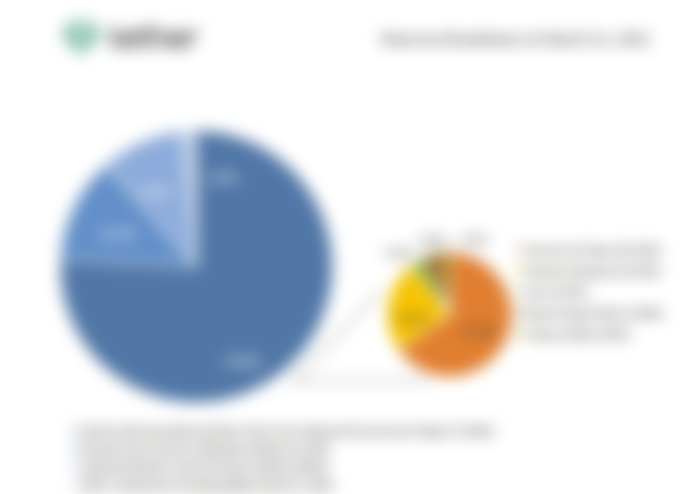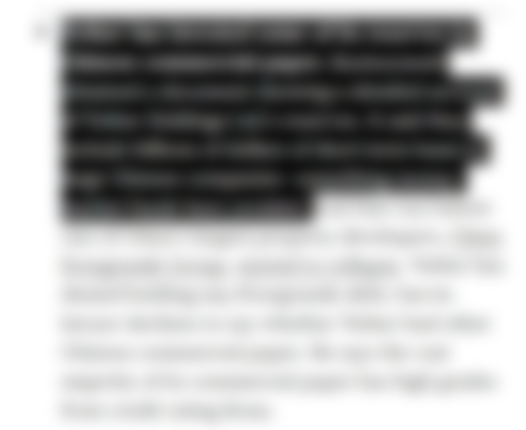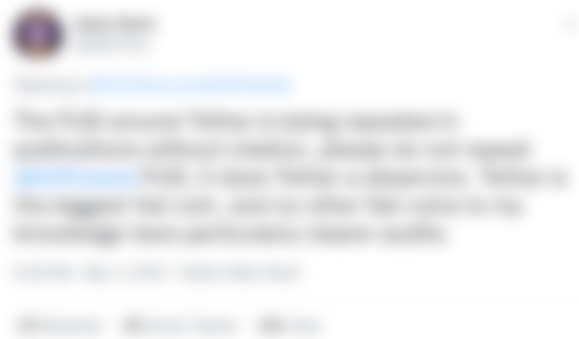
I wish we had some clarity, it's always very difficult to tell our customers something real and this fuels the uncertainty
BTC could tank to below 1k if we don't act quickly
-Bitfinex & Tether CFO, Giancarlo Devasini, "Merlin"(October, 2018)
Tether is the subject of speculation of a collapse for too long. There have been thousands of articles written, all based on the fact of lack of transparency and misinformation of the public.
The first questions appeared right after its inception, and the lack of valid reporting on its reserves. Just until 2019, Tether was claiming each USDT was backed by equal USD reserves. Although no bank confirmed this, and Tether has never performed an independent audit using a respected accounting firm.

Today, we discovered a top executive of Tether, deleted a corresponding Twitter account under the username @urwhatuknow . This is a top executive of the $70 Billion offshore business, that privately runs centralized cryptocurrency stable-coin USDT.
Tether has not been able so far to persuade anyone on its reserves. With a recent release of a pie-chart, it attempted to clear doubts, but only caused a public outcry that fueled the arguments against it even further.

Source: Tether.to
With the release of this pie-chart that would supposedly deliver the years-long awaited transparency from the side of Tether, it raised even more questions, on the subject of "commercial paper".

Most Recent Red Flags
Since its inception, researchers and skeptics frequently criticized Tether for its lack of transparency on the supposed reserves that back USDT 1:1, its connection with unregulated offshore exchange Bitfinex, and the dealings with shady banking organizations around the world.
Back in May, Tether once again surprised everyone negatively, with its actions after releasing a pie-chart that was supposed to explain the assets it held as reserves to back its stablecoin, USDT.

Source: Twitter
A custom-made pie that took 10 minutes to draw is the unrivaled transparency of Tether.

Commercial Paper
Tether, according to the pie chart it released a few months ago, owns $30 Billion in commercial paper. There is a market for commercial paper but Tether is not part of it.
Deborah Cunningham (Federated Hermes) explains:
“It’s a small market with a lot of people who know each other..
If there were a new entrant, it would be usually very obvious.”
The regulated commercial paper market is small, but a lot is going on in the off-shore world that has not been fully explored.
Tether invokes "privacy reasons" when asked about its commercial paper partners and has not been transparent in its approach so far.

Constant Lack of Transparency
Tether lacks transparency since it has dealings with all kinds of shady operations. We only recently discovered that it lent out $1 Billion to Celsius Network, which is already under regulatory scrutiny all over the US for the unregulated financial products (yields) it offers. (source)
The investigation found that Tether had loaned billions of dollars to crypto companies using bitcoin as collateral.
Since Tether does not disclose the names of its partners and issuers of the short-term obligations it calls “commercial paper”, there is growing speculation that a huge part of USDT loans is lent to Chinese corporations. Recently, Tether announced it doesn’t hold any commercial paper from Evergrade.

Once again this doesn't mean anything. As with everything with Tether, we just have to rely on the Tether executives and just trust them without any tangible data that proves anything.

Tether CEO, deletes Twitter account @urwhatuknow
The Tether account @urwhatuknow reportedly bellonging to Jan Ludovicus van der Velde was deleted today.
It seems the Tether CEO (or someone else in control of the account) deleted this Twitter account yesterday, and many pointed to the fact that coincided with the most recent negative Bloomberg article.
A similar account exists at the bitcointalk forum (under the nickname urwhatuknow, source), however, it seems his account was hacked and in 2018 and changed hands since then.

The only reference to him that turned up in a search of Italian newspapers showed he was once fined for selling counterfeit Microsoft software.
Source: Bloomberg
Maybe for any simple user that feels social media is becoming a burden and unproductive, deleting the account is a simple solution.
For an executive of a $70 billion company, this becomes an issue, though. This account was wiped at a time of uncertainty with authorities and mainstream media questioning Tether’s dealings and reserves.
Instead of transparency, Tether executives seem to take the route of completely ignoring the questions of public researchers, providing vague estimates of their reserves in pie-chart form, and even accusing of “jihadism” 99% of individuals that are questioning Tether’s practices.
Tether’s lawyer, Stuart Hoegner, told me by phone that Van der Velde and Devasini prefer to avoid the limelight. He called Tether’s critics “jihadists” set on the company’s destruction.
Source: Bloomberg
I suppose no one craves the destruction of any company.
The business administration is responsible for whether or not a company survives. Not some individual investors or speculators. If the business model is based on solid foundations, then the business will survive.
Although in the case the foundations are not there, then perhaps there is this need for excuses for a possible collapse.
It makes it even worse and suspicions are rising while these executives keep trying to convince the public with no convincing data.
Your word is not enough, especially when there are valid reasons for the audience not to have confidence in it.
Even this approach of social media PR was flawed from the beginning and made the case of Tether even worse. When Tether fails, it will be Tether’s management fault, not the Twitter critics and skeptics that demand answers.

Bitfinex History
Bitfinex was registered with the name RenRenbee PTE. Limited in Hong Kong and was licensed to perform financial operations.
This license helped Bitfinex increase its image, at a time when MtGox collapsed and the crypto market was facing various difficulties.
Although, Bitfinex, eventually suffered a similar fate to MtGox. It announced it was hacked for 120,000BTC in August 2016(source: CNBC).
There was a lot of friction about this hack and Bitfinex created the "Unus Sed Leo" token which was used to reimburse the BTC lost from its customers. The hack raised many questions in the blockchain sphere and many suspicions of inside job involvement.
Bitfinex Hong-Kong license was revoked in November 2017:

The license was revoked and Bitfinex moved out of Hong Kong, at least officially, since it was probably never operating from this region. About a year later we learned that Bitfinex was registered as a financial entity in the British Virgin Islands.
headquartered in Hong Kong and registered in the British Virgin Islands
Source: Wikipedia

Which Entities Support Tether Though, and Why?

Source: The Verge
Tether so far has been excelling at finding regulatory loopholes around the world. Lobbying sustains Tether today. Tether provides support for BTC prices at artificial levels and creates unequal competition between BTC and other cryptocurrencies, often suppressing their price. The amounts today are overwhelming and lobbying from the side of BTC whales has increased by tenfold, such as the price of BTC.
It is obvious who supports and lobbies in favor of the obfuscating practices of Tether. Somehow, this is all related to the same group that currently controls the development of BTC, Blockstream.
Blockstream executives are some of the top Tether supporters and promote USDT, but struggle to provide convincing arguments.
Thus, they resort to the same strategy Tether executives use; condemning reporters and personally attack those that ask the real questions.
A very similar strategy to Tether, accusing as FUD anyone that asks the factual questions.

Samson Mow is the CFO of Blockstream.

Adam Back (Blockstream’s CEO) also offers complete support to Tether, while also in this Tweet he personally attacks Twitter user @bitfinexed (a fierce critic of Tether and Bitfinex). Ad hominem is a practice widely used by the BTC community when they run out of arguments.
The reasons are obvious. All financial entities and private businesses running on top of BTC (Including Blockstream) are gaining from the support Tether provides to the price of this asset.

In Conclusion

“This article does nothing more than attempt to perpetuate a false and aging story arc about Tether based on innuendo and misinformation, shared by disgruntled individuals with no involvement with or direct knowledge of the business’s operations,”
Tether Response, Source: Yahoo Finance
Once again Tether offensively reacts against those that question its practices.
Most importantly, though, it based its response to the fact that the reporter and the individuals that want answers and research the topic, have no direct knowledge of the business operations.
This is true. Tether has been surgically hiding important facts of its operations and business practices. Since there is not a single trace of transparency, people will assume the worst, which is more than often the truth in these situations.
There is a huge backstage war that has stalled the Tether investigations. The backlash will be detrimental to Bitcoin's price when Tether collapses. This is what BTC whales are trying to avoid by lobbying US politicians that are suddenly eager to offer their support.
A $70 billion company comprises just twelve individuals is a red flag of its own.
There is systemic risk within the crypto industry because of Tether, but for the honest participants it will not have long term implications.

Notes: I corrected the name of the Tether executive holding this account. After cross-referencing with crypto news publications, the account @urwhatuknow most probably used to belong to Tether CEO Jan Ludovicus van der Velde, and not to Tether's CFO, Giancarlo Devasini as I wrote initially.
Related Sources:
More of my Articles concerning Tether and Stablecoins:
Images:
Lead Image from: Pixabay (modified)
Follow me on: ● ReadCash ● NoiseCash ● Medium ● Hive ● Steemit ●Vocal ● Minds ● Twitter ● LinkedIn ●Reddit ● email

Don't forget to Subscribe and Like if you enjoyed this article!


















USDT is a “stable coin”. It's value is pegged to the US dollar. The tether organization claim they always have enough in their reserve to keep the token value at $1. Keep in mind, the only reason USDT exists is so that unregulated crypto exchanges can have their users cash out into USD even though they are not able to connect with any bank that issues real USD. My point is, there is no reason to watch the price of USDT as it's purpose is to always be worth $1 usd and furthermore it is just a vehicle for derivative crypto exchanges to offer a way for their users to sit in USD in between trades.